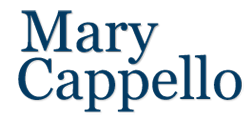“SWALLOW is a surprising and original work. It is biography on the slant, a meditation that transcends boundaries and genres, written with scholarship, humor, and panache. I urge you to take this journey.”

Each of us has at least one formative swallow, one out-of-the-ordinary episode at the threshold of the mouth that made us who we are. — From SWALLOW, (The New Press, 2011)
An American half-dollar. A beaded crucifix. Tooth roots shaped like a tiny pair of pants. A padlock. Scads of peanut kernels and scores of safety pins. A metallic letter Z. A toy goat and tin steering wheel. A Perfect Attendance Pin.
One of the most popular attractions in Philadelphia’s world-famous Mütter Museum is the Chevalier Jackson Foreign Body Collection: a beguiling set of drawers filled with thousands of items that had been swallowed or inhaled, then extracted nonsurgically by a pioneering laryngologist using rigid instruments of his own design. How do people’s mouths, lungs, and stomachs end up filled with inedible things, and what do they become once arranged in Jackson’s aura-laden cabinet? What drove Dr. Chevalier Jackson’s peculiar obsession not only with removing foreign bodies from people’s upper torsos but also with saving and cataloging the items that he retrieved?
Animating the space between interest and terror, curiosity and dread, award-winning author Mary Cappello explores what seems beyond understanding:the physiology of the human swallow, and the poignant and baffling psychology that compels people to ingest non-nutritive things. On a quest to restore the narratives that haunt Jackson’s uncanny collection, she discovers that all things are secretly edible. Combining original research with a sympathetic and evocative sensibility, Cappello uncovers a history of racism and violence, of forced ingestion and “hysteria,” of class and poverty that left children to bank their family’s last quarters in their mouths. Here, the seemingly disparate but equally marvelous worlds of the circus and the medical amphitheater meet in characters ranging from sword swallowers and women who lunched on hardware to the sensitive, bullied boy who grew up to be the father of endoscopy.
Mary Cappello has presented a rare breed of “Illustrated Reading” based on Swallow in a wide variety of venues. » Read more
Praise for SWALLOW:
“…her prodigious rhetorical gifts are undeniable.” — Booklist
“…Cappello brings a poet’s sensibility and a journalist’s fascination to the modern history of foreign body ingestion through the story of early-20th-century endoscopy pioneer Chevalier Jackson…[she] smartly focuses on Jackson’s peculiar life, wondrous fine art, and diligent science, transforming an intriguing medical history into a lyrical biography.” — Publishers Weekly
“Mary Cappello brings a poet’s flair to her meditations on the queer symbolical import of the phenomenon [of swallowed objects]…But she also adds a memoirist’s intimacy and a scientist’s precision, as she centers her tale around the career of Dr. Chevalier Jackson (1865-1958), eccentric laryngologist who dedicated his life to the medical removal of swallowed or aspirated “foreign bodies” from his patients, the resulting carefully preserved collection of which objects can be seen today at Philadelphia’s Mütter Museum…In the end, Cappello’s fine writing creates a book that goes down very easy.” — Paul DeFilippo, The Barnes and Noble Review
“Some books defy categorizaion. Swallow is one. It is a repository of oddities, a soliloquy to swallowing, a meditation on the mouth, and an ode to a remarkable physician…Cappello’s writing is wistful, wacky and wise…Swallow is a strange and alluring work of musings and medical history…Occupying a curious position between Ripley’s Believe it or Not and riveting biography, this book is something special.” — Tony Miksanek, MD, Journal of American Medical Association (JAMA)
“…one odd, and oddly haunting, book…a poetic investigation of the things we put in our mouths (and why)…” — Macleans
“A volume full of lyricism and nonfictive revelations…Her book, so shocking, tender and well written, is likely, despite the subject, to become a bestseller.” — Daniel Nicolescu, Ziarul Financiar
“Cappello uses these found objects to tease out a narrative and ask questions about class, racism, compulsion and violence. She brings a psychoanalytic richness to her understanding of ingestion and dentition.” — The Guardian
“Swallow is a warm and thoroughly researched portrait of Jackson.” — The Washington Post
“Swallow is well researched and no drawer in Jackson’s collection of Things is left unopened and un-pondered…Her connections are…of the philosophical and wondrous variety…Cappello is a brilliant writer and has a kung-fu grip on the English language.” — I Read a Book, Slowdog blog
“[In Swallow], Mary Cappello capture[s] the quirks, and the brilliance, of one of America’s most prolific, and obscure, medical pioneers.” — Journal of the History of Medicine and Allied Sciences
“I was astonished and delighted — grabbed by the throat, indeed — by this most remarkable book, which took me down a thousand little red lanes, and laid out in excruciating and fascinating detail all those myriad of items — corks to safety pins to draughts of lye and three-foot swords — that have managed to pass down there too. It is a wonderful and bizarre book: gorge yourself on it, and gulp.”
— Simon Winchester, author of Atlantic: The Biography of an Ocean
“Swallow is a wonderful, intriguing book, a fascinating glimpse into a true medical pioneer and a life’s work. Mary Cappello delves into what it means to ingest things we weren’t meant to eat, and how the line between our bodies and foreign bodies can sometimes blur. Every object tells a story, and the stories here are marvelous.” — Colin Dickey, author of Crankiolepty: Grave Robbing and the Search for Genius
“Award-winning author Mary Cappello (Called Back) brings a poet’s sensibility and a journalist’s fascination to the modern history of foreign body ingestion through the story of early-20th-century endoscopy pioneer Chevalier Jackson…Cappello smartly focuses on Jackson’s peculiar life, wondrous fine art, and diligent science, transforming an intriguing medical history into a lyrical biography. Medical practitioners and nonprofessionals will be equally fascinated.” — Publishers Weekly
